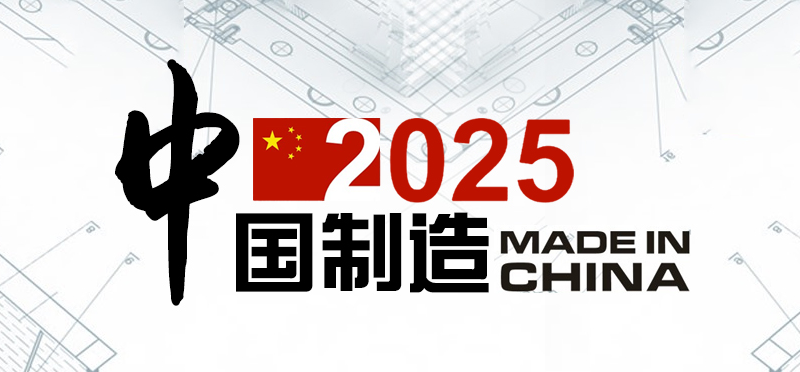MADE IN CHINA 2025 ALARMS WEST
MADE IN CHINA 2025 ALARMS WEST
Syllabus:
GS- 2: International Relations (India-China, WTO, technology sovereignty)
GS- 3: Economy (industrial policy, manufacturing, trade), S&T (AI, EVs, 5G)
Focus:
The Made in China 2025 (MIC25) initiative marks its 10th anniversary, with global assessments revealing its remarkable achievements in transforming China’s manufacturing landscape. This ambitious plan for China manufacturing has become a focal point in discussions about global competitiveness and technological leadership. While MIC25 achieved many of its objectives, such as boosting high-tech industries and import substitution, it also triggered backlash from the West, notably the US and EU, concerned over unfair trade practices and geopolitical shifts. The initiative, which aims to elevate Chinese manufacturing to world-class standards by 2025, has reshaped the landscape of international competition and sparked debates on intellectual property rights and market access. As a cornerstone of China’s 2025 technology strategy, MIC25 has propelled the nation towards becoming a global leader in advanced manufacturing and innovation.
POST-CRISIS STRATEGIC SHIFT:
- Global Crisis: The 2008 financial crisis exposed China’s overdependence on exports and low-end assembly, causing a 16% drop in exports and mass layoffs.
- Stimulus Push: A 4 trillion renminbi stimulus in 2009 boosted GDP but resulted in overcapacity in steel, cement, and real estate, creating long-term debt issues.
- Demand Stagnation: Despite infrastructure investments, domestic consumption remained weak, accounting for just 33% of GDP in 2009.
- Debt Explosion: Debt levels surged from 150% of GDP in 2008 to nearly 280%, causing concerns of an economic imbalance.
- Policy Realization: By 2013, the leadership under Xi Jinping recognized the need to reform China’s growth model through supply-side measures and promote China local innovation. This realization laid the groundwork for what would become Made in China 2025, with initial discussions and planning taking place as early as made in China 2019.
Understanding Made in China 2025 (MIC25): |
| ● Launched in 2015 by China to transform into a high-tech manufacturing leader. |
| ● Targets 10 strategic sectors like AI, robotics, EVs, and aerospace. |
| ● Aims to reduce import dependency and promote technological self-reliance. |
| ● Promotes domestic innovation through subsidies, R&D, and state support. |
| ● Triggered global backlash, especially from the US and EU. |
| About Industrie 4.0 (Germany): |
| ● A German strategic initiative for digitising manufacturing launched in 2011. |
| ● Promotes integration of IoT, AI, cyber-physical systems in factories. |
| ● Aims for smart, autonomous production using real-time data. |
| ● Serves as the inspiration for MIC25 in China. |
| ● Focused on efficiency, customization, and innovation in the Fourth Industrial Revolution. |
| Key points : Belt and Road Initiative (BRI) |
| ● Launched in 2013 to build infrastructure connectivity across Asia, Africa, and Europe. |
| ● Involves roads, ports, railways, and digital corridors. |
| ● Aims to expand China’s trade, influence, and soft power. |
| ● Criticized for creating debt traps and strategic dependency. |
| ● Complemented MIC25 by extending China’s economic footprint globally. |
VISION OF MIC25:
- Inspired Model: MIC25 drew partial inspiration from Germany’s Industrie 4.0, aiming to modernize China’s manufacturing capabilities and promote China new technology.
- Policy Focus: The plan targeted indigenous innovation, smart manufacturing, and technological self-sufficiency in high-tech sectors, emphasizing research and development. This focus on industrial upgrading has been a key driver of China’s technological advancement.
- Ten Sectors: These included aerospace, rail transport, new energy vehicles (NEVs), and biomedicine, with a focus on increasing domestic content to 70%.
- State Support: Massive state funding, preferential loans, and procurement policies were used to pick and promote national champions, including state-owned enterprises.
- Tech Dominance: The policy’s core aim was to reduce dependency on foreign technologies and position China as a global tech leader, particularly in artificial intelligence and advanced semiconductors. This push for technological supremacy has even extended to cutting-edge projects like the artificial sun China initiative, showcasing the country’s ambition in fusion energy research.
WESTERN REACTIONS AND COUNTERMOVES:
- Strategic Alarm: The West viewed Made in China 2025 as mercantilist, violating WTO rules and undermining market principles.
- Trump’s Actions: Under President Donald Trump, the US imposed tariffs, export controls, and investment screening targeting MIC25 sectors.
- EU Measures: The European Union also responded by encouraging economic decoupling and tightening its investment rules.
- Concerns Raised: Key issues included forced technology transfer, cyber-theft, and non-transparent subsidies distorting global competition. The West has particularly highlighted the potential for market distortion resulting from China’s state-driven approach.
- Global Backlash: MIC25 directly contributed to a growing wave of protectionist measures and a shift towards tech sovereignty in the West, intensifying international competition.
SUCCESSES OF MIC25:
- Manufacturing Leadership: China now contributes 30% of global value-added manufacturing, surpassing the US at 16%, showcasing the success of made in China products. This dominance has led to discussions about made in PRC vs made in China labeling, with some companies preferring the former to differentiate their products in international markets.
- Tech Giants: Companies like BYD (electric vehicles) and Huawei (5G, AI) have become global leaders, challenging Western firms in new energy vehicles and telecommunications.
- Industrial Robots: With more robots per 10,000 workers than Germany, China is rapidly automating its industries.
- Export Strength: Despite tariffs, EV exports to the EU have soared, with BYD outselling Tesla in certain markets, demonstrating the competitiveness of Chinese manufacturing.
- Localization Push: Multinationals are localizing production in China due to incentives and rising domestic capability, further strengthening the China manufacturing base. Information on these developments is often available through the official made in China website, which serves as a platform for promoting Chinese industrial capabilities.
PERSISTENT VULNERABILITIES:
- Import Reliance: China still faces weaknesses in semiconductors, aerospace, and advanced biomedical technologies, areas where foreign technology acquisition remains crucial.
- Overcapacity Risk: Sectors like EVs and solar suffer from excess capacity, raising fears of price wars and unsustainable growth.
- Debt Burden: High public and corporate debt, coupled with real estate volatility, continues to threaten macroeconomic stability.
- Ageing Workforce: Demographic challenges, including a shrinking labor pool and rising unemployment, are constraining long-term growth. This has led to increased focus on talent recruitment strategies to attract and retain skilled workers in key industries.
- Perception Wars: China’s global image is under strain, as countries view its assertive policies and state-driven growth model with skepticism.
EVOLVING STRATEGY AND GLOBAL OUTLOOK:
- MIC25 Repackaging: The policy has been absorbed into a broader agenda called “new quality productive forces” for continued industrial innovation and green manufacturing.
- Cold War 2.0: The West-China divide is deepening into a techno-geopolitical rivalry, often termed Cold War 2.0.
- Narrative Battle: China is investing heavily in global communication strategies to reshape the discourse on its development model and the benefits of Made in China 2025.
- Mixed Diplomacy: Projects like the Belt and Road Initiative (BRI) have seen limited success, especially in Africa and Central Asia, but continue to expand China’s influence in the China world.
- Future Projection: If current trends persist, China could control 50% of global manufacturing value-added within a decade, further challenging US hegemony and reshaping international competition. This push for dominance is closely tied to China’s broader goal of national rejuvenation, which sees technological and industrial leadership as key to restoring the country’s global standing.
Conclusion:
While Made in China 2025 has driven China’s remarkable ascent in high-tech industries and manufacturing, it has also intensified geopolitical friction and exposed vulnerabilities like overcapacity, debt, and demographic decline. The success of MIC25 signals both an economic milestone for China and a strategic wake-up call for the West, demanding a recalibration of global industrial policy. As China continues to push for technological leadership and supply chain dominance, the international community must grapple with the implications of this ambitious make in China strategy for global competitiveness and the future of China manufacturing industry. The initiative’s focus on strategic industries and domestic production has reshaped the global economic landscape, making Made in China 2025 a pivotal factor in shaping the future of international trade and technology development.
Source: MINT





